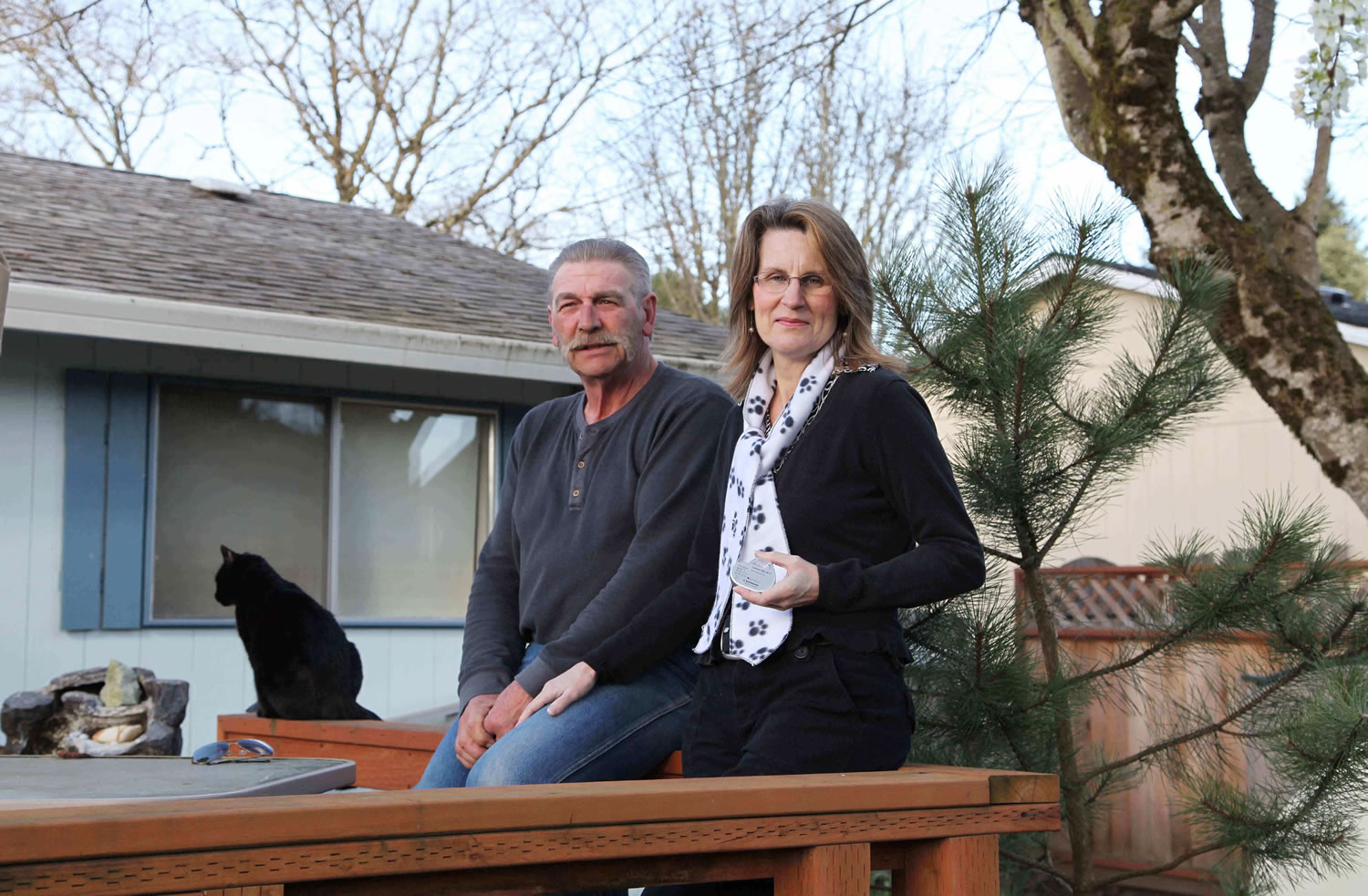ALOHA, Ore. — Diedre Gibbons’ disability income and her husband’s part-time job on a construction crew barely pay the bills. Although the couple need ongoing health care and qualify for subsidies on the state’s insurance exchange, they are uninsured.
The upbeat 51-year-old who once ran a house-cleaning business has congenital heart failure and is in and out of hospitals. She desperately needs coverage, but the Gibbonses earn just over the limit to qualify for Medicaid and they’re too poor to pay for even the lowest premiums available under the new federal health care law.
“It’s not something we can afford,” Diedre Gibbons said. “We’re barely keeping our nose above water.”
The couple’s plight is not uncommon: Experts say thousands of low-income people in Oregon and across the country are uninsured, stuck in a low-income coverage gap.
About 120,000 Oregonians who must get insurance or pay a fine under the federal law will remain uninsured by 2019, according to the Oregon Center for Public Policy. Of this group, nearly half will be low-income people with earnings below 200 percent of the federal poverty line — which was $22,980 annually for an individual in 2013 — but who still make too much to qualify for the Oregon Health Plan, the state’s version of Medicaid.
“These people don’t have a lot of resources; a lot of them are just getting by and they … may not have that extra cash,” said Linda Blumberg, a senior fellow at The Urban Institute, who is studying the impacts of health care reform. “The notion of taking on something like health insurance payments may feel formidable, even if it’s still a good deal for them.”
The goal of the Affordable Care Act, by its very name, was to fill gaps in coverage and make health care available to all, no matter the income. The law expanded Medicaid — in Oregon and the 24 other states that approved expansion — to millions of low-income people who make up to 138 percent of the federal poverty level, or $15,856 a year for an individual.
To other low-income and moderate-income people who earn more than that, the law provides financial assistance in the form of subsidized premiums and lower out-of-pocket expenses on private insurance purchased via the exchanges. But experts say Americans who fall just above the Medicaid eligibility limit, those earning between 138 and 200 percent of the federal poverty levels, are at risk of not being able to afford coverage.
This group includes people who work part time or are self-employed. It also includes people expected to frequently shift between eligibility for Medicaid and for purchasing on the exchange due to changes in income and family circumstances.
The new law includes an option for those individuals, known as the Basic Health Program. Earlier this month, the Centers for Medicare and Medicaid Services published the final rules for the little-known provision, which allows states to use federal funds to establish an alternative coverage program with more generous subsidies for low-income individuals who don’t qualify for Medicaid.
States can implement the Basic Health Program starting in 2015, and several have expressed interest. In Oregon, the Legislature recently passed a law calling for the Oregon Health Authority to study the option.
In the meantime, low-income Oregonians who don’t qualify for Medicaid face sticker shock on the exchange. For people earning between 138 and 200 percent of the federal poverty level, silver-level plans that cover 70 percent of typical health care costs range from $100 to $250 per month for nonsmokers, with the tax credit applied. The higher-priced plans have lower out-of-pocket costs and a wider network of doctors and hospitals. Plans for smokers are even more expensive.
Bronze plans offer the lowest premiums but have the highest deductibles and co-pays and narrow networks of doctors and hospitals, making them less appealing for people with limited incomes and health problems.
Previously in Oregon, many low-income people in the coverage gap were eligible for free or low-cost care at participating hospitals, said Linda Nilsen-Solares, executive director of Portland-based Project Access NOW, a nonprofit that has coordinated charity care for low-income uninsured patients in the Portland area since 2007.
For such patients, paying even small monthly premiums, not to mention hundreds of dollars in deductibles and co-pays, may be out of reach.
To help people like the Gibbonses, Project Access NOW has started a premium assistance pilot project, in conjunction with the Healthy Columbia-Willamette Collaborative. Eligible Oregonians must be referred to the program by a doctor or hospital. For those who qualify, the program will pay the premiums for a silver plan on the exchange. That’s a relief for Diedre Gibbons, who just underwent an $80,000 heart ablation surgery.
“I’m seriously grateful,” she said. “If I didn’t find this program, I wonder how I would pay for the bills that keep piling up.”



